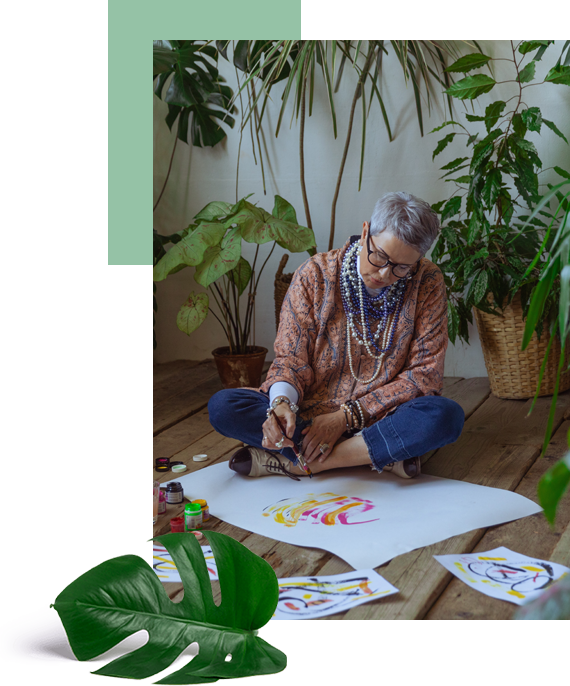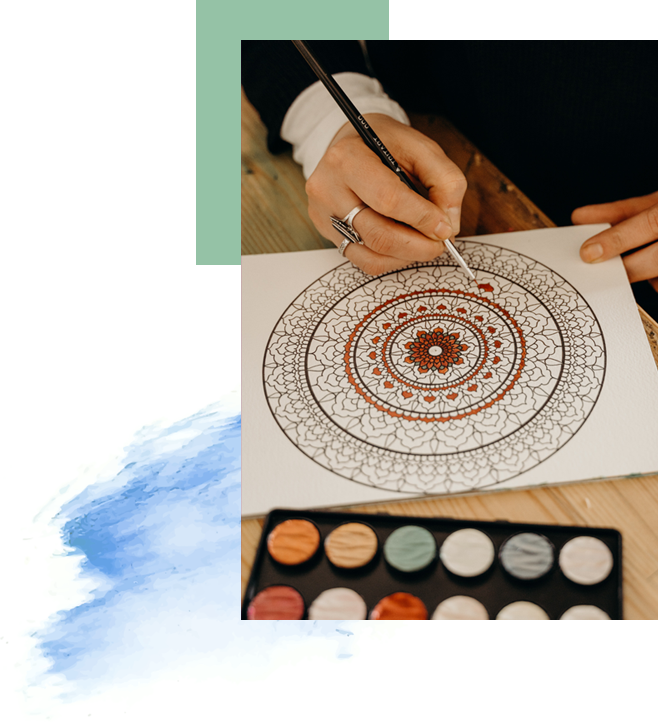What is expressive therapy?

are bothering you?
Expressive therapy allows you to access, explore, and work
through difficult emotions and life events by using different forms
of creative expression. This approach lets you use multiple senses
to explore your inner self, thoughts, feelings, and conflicts.
Expressive therapy can involve various creative activities such as
drawings, writings, role-playing, music, or dance.
Expressing yourself creatively provides you alternative outlets to
help experience insights and relief, especially when you can’t
express yourself with words. This approach promotes gentle
healing, empowerment, and can help you increase self awareness.

Who can benefit from an expressive therapy approach?
Expressive therapy isn’t just for children. Adults benefit from these creative modalities too! Expressive therapy can help people dealing with anxiety, depression, self-esteem, stress, and personal growth.
This approach uses different forms of expressive arts to foster joy, a sense of play, and deeper understanding. It helps with various conditions, including anxiety, depression, self esteem issues, stress, interpersonal conflicts, personal growth, and more.

How does expressive therapy work?

Expressive therapy helps you work through emotions or encourage personal growth by tapping into creative outlets. You don’t have to be an artist to benefit.
This approach allows you to see yourself, problems, and issues you’re working through in a different way, which can foster a deeper understanding and help you move forward.
These creative methods will help you access your feelings or explore difficult events in a different way. For instance, we may incorporate movement to help you achieve a deeper connection with your body, use painting or drawing to allow you to express your current state nonverbally, or use role-playing to build coping skills or release stress.
How Kimberly Schmidt Bevans, LMHC, BC-DMT uses expressive therapy in sessions
Expressive therapy may involve art work, journaling, collages representing feelings or difficult experiences, or other forms of creative expression.
For instance, I’ve guided clients to work with pipe cleaners. During the session, I’ve guided them to pick a color that matches their emotional experience and invited them to shape the pipe cleaner into a form that shows how they’re feeling. I’ve even had clients build entire pipe cleaner structures to express how their anxiety functions in their life, leading to new insight and deeper understanding.
Other times, clients choose to draw their inner experiences. During this time, we focus on bringing these internal feelings and thoughts into something they can express visually. This allows for transformation, play and a new perspective.
The possibilities of expressive therapy are endless since we use different materials to encourage your own insights and feelings.

Are you ready to experience therapeutic strategies that go beyond traditional talk therapy?
My unique body-focused and expressive arts therapy uses more than talk-based therapy to help you gain insights, address your current problems, and create the fulfilling life you want. Schedule your free phone consultation so we can discuss if my approach is right for you.

